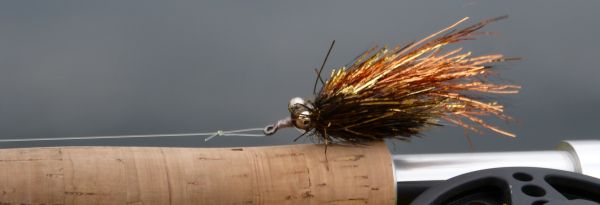
Make reds angry — give ’em the bird
Many centuries from now, archeologists will unearth a fishing diary belonging to one Catch Cormier. They’ll study it and find an amazing discovery. Like the Shroud of Turin, it will baffle scientists.
They will be asked to explain a contradiction, based on what was known of my life. How there could be several logs of saltwater trips during April of various years, at a time when freshwater fishing is at it’s peak.
They’ll be asked, “How could a freshwater fanatic give up his beloved bream and bass for redfish, when that species is active all year long?”
Scholars will question the results, and then question my sanity. I often question my sanity. Well, at least four of the five voices inside my head do.
But the truth be known, April is one of the best months for sightcasting to redfish.
In winter, cold water holds little suspended organics or sediments. As water warms in spring, vegetation begins to grow and thrive in clear brackish ponds. Widgeon grass and algae serve to provide cover for juvenile shrimp and crabs that move into the estuaries.
Reds follow the bait into these grass-laden ponds. The grass prolongs the clarity of the water until summer, and as we know, clear water favors flies.
Two of my best fly trips for the Spottail Elvis came in early spring. One was 51, the other was 44. That’s not number of casts made, that’s number of fish caught.
Little wonder that when my good friend Ron Begnaud offered to take noted artist and fly tier Tim Borski and me to one of his secret redfish ponds, I canceled a crappie trip without hesitation.
Ron wasn’t kidding about his “secret” spot. Tim and I were asked to leave our blindfolds on until we reached the honey hole. All I can say is that it’s somewhere east of the Sabine River and west of the Pearl River.
The sun was about 10 degrees over the horizon. Just enough for us to spot the reddish tints that surrounded Ron’s boat. These were happy fish, tailing and backing. Just about anything we threw, they ate. It was going to be a glorious day.
Then just like that, the activity died. No matter what we tossed at the poisson rouge, they wouldn’t eat.
At this point, Tim pulled out this great-looking fly.
“This is a new pattern I’ve created,” he said. “It’s tied with a material similar to mylar, but with a lot less memory and a little less flash. In fact, it seems to (flash) colors like the feathers on a starling. So I call it the Starling. I think it might work.”
When I glanced at the fly, I wanted to eat it. And I don’t eat flies (unless they have Grey Poupon on them). I could definitely see a Spottail Elvis gulping this down.
Ron spotted a nice red about 30 feet out at the 2 o’clock position, moving to our right. Tim projected a cast in the direction the fish was moving. But a gust of wind caught the leader, and the fly fell behind the red.
Somehow that fish caught a glimpse of the Starling. When it spotted that fly — that pulsating fly — moving in small spurts through the water, it couldn’t help itself. I’ve seldom seen a red turn 180 degrees so quickly and violently attack a fly.
Over the next half hour, we spotted a few more reds, and each time, the Starling did it’s magic.
Ron had some function that night, so around 1 o’clock Tim and I put our blindfolds back on, and we started our way to the launch.
Where we fished, I don’t know. But there are many, many similar ponds like that in our marsh.
At least I came away with a Starling in my pocket.
The Starling is not a complicated fly. It can be tied with bead chain or lead eyes, depending on how deep it will be fished. The tail and body is completely made of a material referred by some tiers as karluk but sold as “mirage opal flashabou.” You can spin it or stack it like deer hair, or spin it on using a dubbing loop.
The secret to this fly is the material. Unlike most flash synthetics, karluk is more transparent and somewhat refractive, thereby tinting to the color of the water. Where a regular flash fly might spook fish, one made of this stuff has a hint of flash, looking more like bait than a disposed beer can.
Better yet it is softer than most flash material. When stripping this fly, the material pulsates like marabou.
Start making room in your fly box for the Starling next to the spoonflies, poppers, charlies, seaducers and redchasers. This new diva is going to give many Spottail Elvises a sore mouth.


